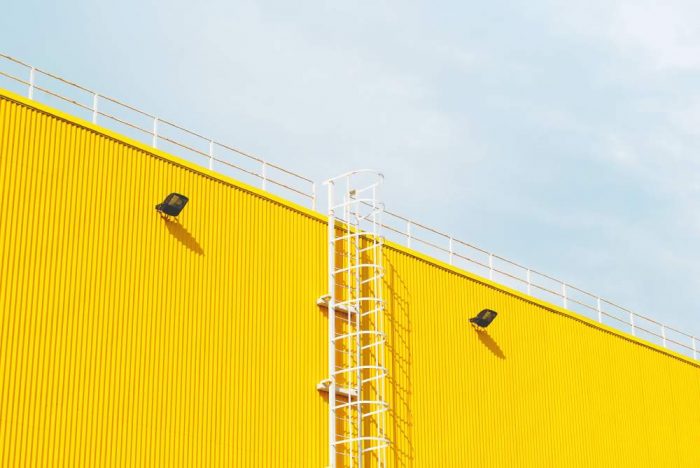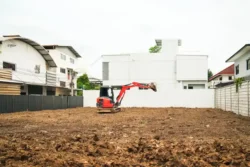7 things to look for in an industrial real estate investment
Published
September 21, 2020
Published
September 21, 2020

Industrial real estate has become one of the most popular investments in Australia. With COVID-19 increasing the relevance of logistics and last-mile operators, and with a handful of manufacturing opportunities returning to Australia, more investors will look to this high-quality asset class for their next investment. If you want to invest in industrial real estate, here’s what to look for:
- Location
- Market
- Tenancy mix
- Leasing terms
- Specialised equipment
- Property & Site coverage ratio
- Gentrification
But before we hand over our tips, let’s answer the obvious question for first-time investors:
What is industrial real estate?
Industrial real estate
is typically any property tenanted by manufacturers, retail wholesalers, warehouse users, and distributors.
Dressed like a tin shed or ugly warehouse, industrial properties can be much more intricate than the eye lets on. Many will have attractive office space attached to the industrial building, and particular occupants may even have automated technology inside their steel walls.
Automation has played a bigger role in industrial property over the years. It’s also become a major expense for industrial landlords whose tenants have turned to robotics and automation for their business activities. It’s an innovation that’s made industrial real estate a very exciting investment category.

What we look for in an industrial real estate investment
Here are a few items Properties & Pathways puts a microscope over before purchasing an industrial property:
1. Location
Start from the top-down. Where are you going to invest, and why? Which state or capital city? And in which precinct?
For example, Melbourne and Sydney, with their large population spread, have paved the way for logistics and warehouse facilities. Amazon’s two Australian fulfilment centres live in VIC and NSW, and more major last mile logistics companies are making their presence known. If you can find relevant industrial assets in these areas, you could be off to a good start.
It’s crucial the precinct you choose has good access to major arterial roads and transport links.
Trucks and large vehicles don’t want to navigate through intricate CBDs and small streets. They want a clear path to the nearest highway so they can get their long haul underway, and keep transportation and freight costs low.
2. Market
Understanding the leasing market will help you determine what industrial property is ideal for you (or specifically, your tenants).
For example, tenants in your chosen precinct may only want a small office-to-warehouse ratio. They may require high ceilings to allow for large gantry cranes.
Every precinct will have different tenant demand. So, for your asset to appeal to the widest segment of the tenant market, it is crucial you pay attention to these demands before investing in an industrial property.
Consider the usual commercial property investment fundamentals by understanding vacancy rates and market rents in your chosen industrial area. Knowing these factors well will prove to you whether a property’s asking price is fair or inflated.
3. Tenancy profile
Your tenant should have a strong performance history and ideally operate nationally or internationally.
Your tenant should also be relevant, and operating in a buoyant market segment.
For example, with mining returning to strength in WA, it might be practical finding an industrial tenant that serves the needs of major mining firms. Even an industrial occupant who repairs equipment for mining companies could be very fruitful in a mining downturn, when companies stop buying new equipment and repair the gear they already own.
As they say, “Read the room”.

4. Lease Terms
Typical industrial property lease terms will range from three to 10 years, with annual rent escalations either in line with the Consumer Price Index (CPI) or a fixed percentage (perhaps, 1 per cent or 2 per cent annual increases).
Rent is a major component of the lease agreement.
If you set your property’s rent higher than the market rent of your chosen precinct, you will struggle to find a tenant to occupy your premises. Instead, understand the benchmark rents in your area and set yours appropriately.
5. Specialised equipment
If you find a property with specialised equipment, such as a cold storage facility or a large gantry crane in the middle of the lettable area, you can bet you’ve just removed a chunk of candidates from your pool of potential tenants. But this might not be a bad thing.
If your property has specialised equipment, then you can appeal to a niche market. You might have the only high-quality automation facility for 20 square kilometres, making your property perfect for a tenant requiring such specialised equipment.
Businesses seeking industrial real estate have a range of needs and some are more specific than others. If you’ve researched the market properly, you’ll know whether or not your chosen commercial property will whet their appetite.
6. Property and site coverage
On your hunt for the perfect industrial property investment, you’ll discover tenants will pay particular favour to:
- Proximity to major transport links and arterial roads.
- Suitable ratio of warehouse to hardstand. Also known as site coverage, industrial real estate typically has a greater land component dedicated to hardstand and yard space, and less dedicated to buildings. This will typically suit such common tenants as steel manufacturers, who have a large amount of material and stock to be stored outdoors.
- Accessibility for trucks and large vehicles.
- Large and wide roads to accommodate heavy vehicles.
- Significant roof and gantry height.
Keep tenants happy by ensuring your property design is in line with their requirements. We can’t emphasise this enough: Your tenants’ needs come first.
7. Gentrification
This one goes back to location. Your chosen precinct might be evolving for one reason or another. It might be an old Large Format Retail (LFR) district that is becoming populated with industrial assets. Retail assets have large parking lots and warehouse-style buildings. Many are even saying the future of LFR could be industrial.

Or maybe the precinct is going the other way, moving away from industrial and toward LFR. That might not be a bad thing if you hold an industrial property in this area. In several years’ time, you could hold one of the last industrial assets in your precinct and name your price to a prospective LFR landlord.
Industrial property success depends on research
There are many factors to consider when investing in industrial real estate. You need to understand what to look for to give your investment the best chance of success. Don’t turn the benefits of industrial property investment into burdens by conducting lazy research.
Or why not invest with industrial real estate professionals? Get in touch with us to find out about our exclusive investments in industrial real estate.






